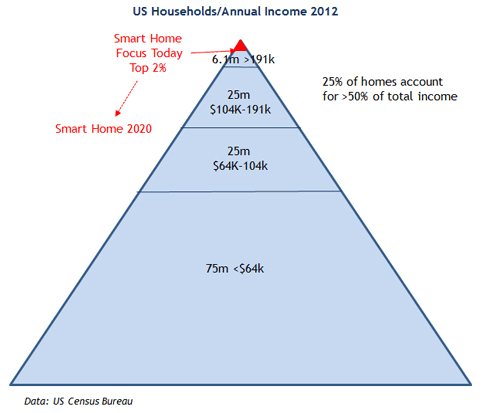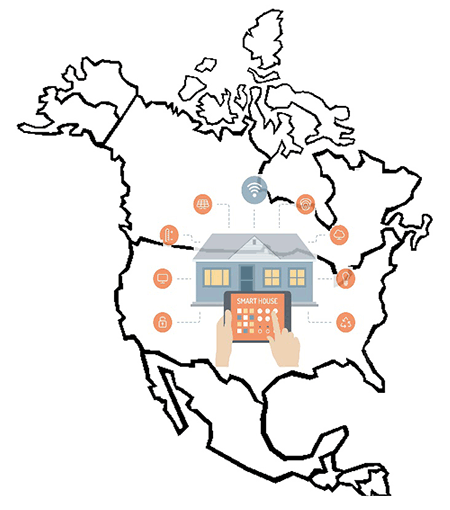Futuresource Consulting has just released its latest smart home report, which maps out the smart home landscape. The report identifies the key drivers, such as security, that are shaping demand and assesses the likely impact these drivers will have on the expanding consumer markets.
According to Futuresource the key market catalysts driving the smart home market are low cost smart devices and mobile apps. Nobody will own the Smart Home market – hundreds of companies are competing for share with different value propositions. Smart Home standards will also be open – many platforms, open and proprietary technologies are already being exploited and will interact.

The report predicts that DIY Home Automation (controllers, devices) segment will experience high growth from a small niche market, which will be helped by online distribution. Most wealthy households will still want customised, professionally installed systems and design services, despite the availability of low priced DIY home automation systems.
“The smart home market will see huge expansion over the next 5 years going from industry and geographical niches and quickly spreading to a much wider market,” commented Simon Bryant, Associate Director Consumer Electronics, Futuresource Consulting. “North America is currently creating 60% of global demand. The key drivers are security and convenience lifestyle, remote monitoring and control. “The market for Home Automation packages and individual smart devices (sensors, actuators, cameras, etc.) is predicted to grow at 30-35% for the next 5 years, reaching $6-7bn worldwide by 2020.
Energy efficiency is also important, helped by utility interest and actual subsidies. Most impact will be felt through added value features in appliances and residential systems e.g. security, heating and lighting control.
Futuresource predicts that incremental services revenue growth will come from security monitoring subscribers, but payment resistance is likely in many countries and many people will expect Home Automation apps to be free.
1. North America is currently creating 60% of the global #SmartHome demand (bitly link to press release)

In additional the deployment of hundreds of millions of connected devices (standalone and embedded) will create a new high volume market for semiconductor suppliers, although prices must be very low to make the market viable.
This report, provides an invaluable overview of the competitive situation and evolution of standards across the smart home arena. It is complemented and draws on the continuous industry research into consumer electronics markets across 27 countries, as well as a comprehensive review of recent publications relating to Home Automation


